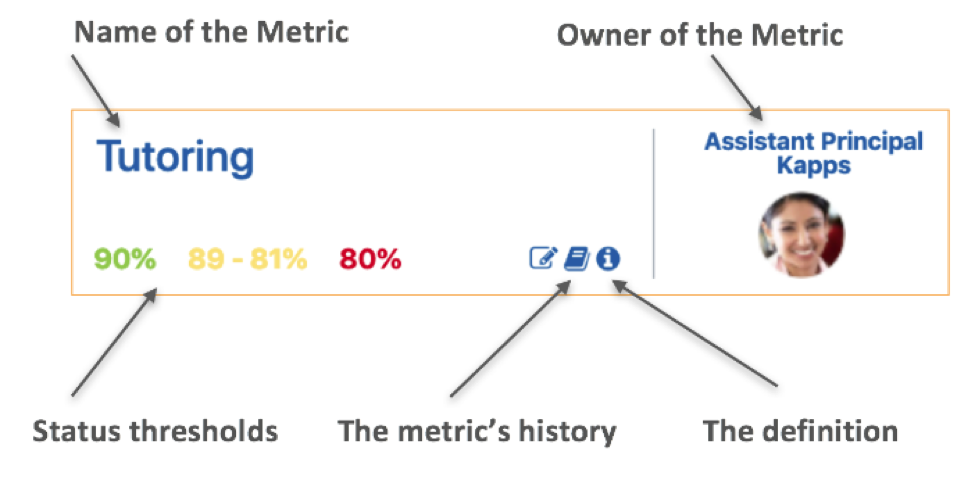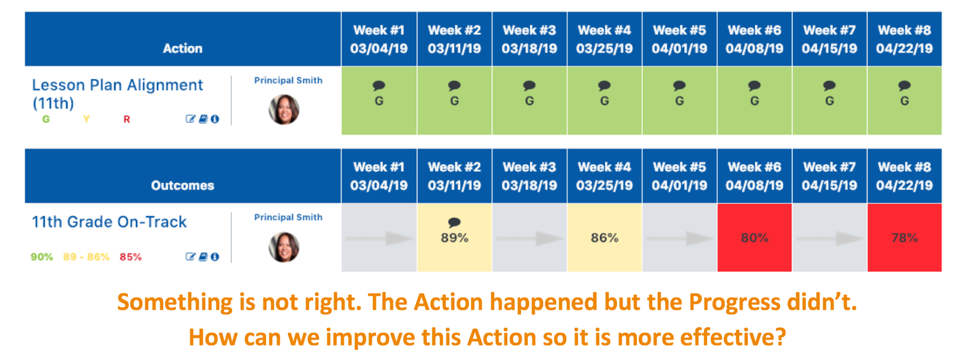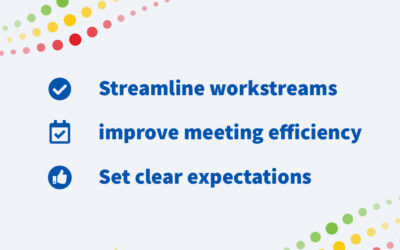As educators, trying to improve a school or bring it to the next level starts with a school improvement plan. To create that plan, you and your team will use a lot of energy and expertise. You will invest your time, your passion, and your political capital in crafting specific strategies and approaches. In many cases, you will also engaged outside experts and partners to help create your plan.
But creating a plan and then distributing it to the team (or even worse putting it on the shelf) isn’t enough. The really hard work starts with implementation. And for underperforming schools, the pressure to produce is even greater because the clock is ticking.
Most plans that fail don’t fail because of the plan itself. Most plans fail because the essential links between planning, implementation and student outcomes is broken. As educators we are really good about setting goals and defining the strategies that we’re using in service of those goals. But, then school happens. The day to day realities of life in a district or a school take over and the connection between our strategic / tactical efforts and student impacts break. So we find ourselves at the end of the semester or the end of the year looking back and trying to work out what parts of our plan we implemented, what parts we didn’t, and if the plan had any impact at all
What best practices are required for successfully implementing school improvement once the school or district improvement plan is completed? In our experience, addressing 3 areas is critical; 1) implementation, 2) progress management, and 3) course correction.
Implementation
The first step is for the School Improvement team to share, set, and communicate the goals of the plan and to specify the tactics required. This means you need to think beyond goals. You need to be very specific about:
- What the goals are
- The tactics required for achieving each goal
- Who is accountable for each tactic
- The time frame
- How it will be measured
You need to change the inputs of your team to change the results. By changing the inputs and connecting those inputs to student outcomes and specific goals you will have the desired impact on student outcomes.
Progress Management
The second step is oversight. Oversight is all about consistent reporting. Most of the time, updates about improvement plans are ad hoc. They’re provided informally in different formats by different people and they may even just be hallway chats or emails. Reporting needs to be formalized, consistent, and simple. You need a software that manages this reporting. You need to set a time that reporting needs to be completed. That software needs to be easy to use and school improvement leaders need to set a time weekly or bi-weekly to review that reporting.
Next, you need to track actions and their impact. To do this, you need metrics. Metrics can describe anything that needs to be managed or kept front of mind. Metrics could be student outcome metrics, academic intervention metrics, social emotional learning metrics, or metrics about specific interventions. Really anything that you need insight into, to make sure that your improvement plan is moving forward. Metrics all need a clear description and a clear owner. Finally, they need defined Green, Yellow, and Red thresholds.
What you see below is a screenshot example of a defined metric. Tasks and actions tied to specific outcomes provide the entire team with a clear picture of the plan, what is being done to support the plan, and what the outcomes of those actions are.
Metrics Describe Tactics That Need To Be Monitored

This process saves time in the long run. With reporting and metric tracking in place, your staff meetings are no longer consumed by reporting. They become focused on problem solving and collaboration because all the “report outs” have already happened. A software sets you up for real fact-based conversations based on efficacy.
Check Out Our Demo To See How Metrics Can Work For You
This quick 6 minute demo of RespondAbility’s Progress Management Software demonstrates how you correlate metrics to actions to improve student results.
Course Correction
We like to compare implementing a school improvement plan to the relationship between a doctor and patient. A surgeon may go in with a plan and when the patient is on the table, that plan may change. And so the surgeon needs to have real-time data and feedback to be able to change the surgical plan in real time. And that’s exactly what we need as educators. We have our school improvement plan, but the world changes. Some improvement plan elements are going to be really effective. Some will not. As educators, we need to be aware of what’s effective and what’s not, so that we can course correct in real time.
Why is it Important to Measure Effort to Impact
RespondAbility’s Founder, Gavin Doughty, discusses the power of correlating effort to impact to ensure you hit your plan’s targets
The final best practice of implementing a school improvement plan is having the ability to course correct. Putting a plan in place at the beginning of the year and then checking in on student data at the quarter, semester, or the end of the year is completely insufficient. As educators, we need to actively monitor implementation efforts and see the impact on students right here and right now. If it’s having a positive impact on our student outcomes, fantastic. Continue to implement that tactic or strategy. If it’s not having a positive impact or if it’s not having enough of a positive impact on our students, we need to figure out how to course correct.
With a clear understanding of accountability and metrics, course correction becomes easy because you have created a collaborative space. The team can now come together to focus on course correction. In the example below, you can see how course correction works in RespondAbility. The top row represents an action that is intended to impact the student data in the bottom row. As you can see, the action is faithfully happening week after week (note the green each week), but the student results that indicate real impact are moving in the wrong direction (moving from yellow then red over the weeks).

This level of insight is possible because:
- Reporting is automated and streamlined so the information you need for visibility is in one singular place
- You can see how that plan is actually being implemented
- You have oversight and monitoring ability so you can see the actions that are working and focus you energy on what needs to be improved
Success often comes down to sweating the small stuff, but it needs to be the right small stuff. With this level of insight you and your team will have the capacity to sweat the small stuff without destroying the culture. Too often in education, we use data in a punitive way that is not actually course correcting or focused on figuring out what we need to do to keep growing our students and to keep driving their success. The RespondAbility process creates a collective experience that allows us to capture the collective power of our teachers, staff, and administrators to actually look at what’s happening now and course correct. Your improvement plan should not be a static document. It should be a living, breathing document that drives student success throughout the year. These three best practices make this possible.
About RespondAbility
RespondAbility focuses on helping two types of schools:
- Schools on a short timeline that need an immediate catalyst to expedite the work inside their school – facilitating rapid progression with student outcomes, cultural outcomes, and data generation that will prove those outcomes are occurring.
- Schools that are at the precipice of tipping over into being exemplary in their district – they need that one push to go from good to great.
RespondAbility is a cloud management software that helps Districts and Schools successfully implement their school improvement plans. Once you have a plan we help you:
- Turn your school improvement plan into a living document
- Implement and collaborate on school improvement actions
- Monitor and adjust your school improvement plan based on the impact to student outcomes




